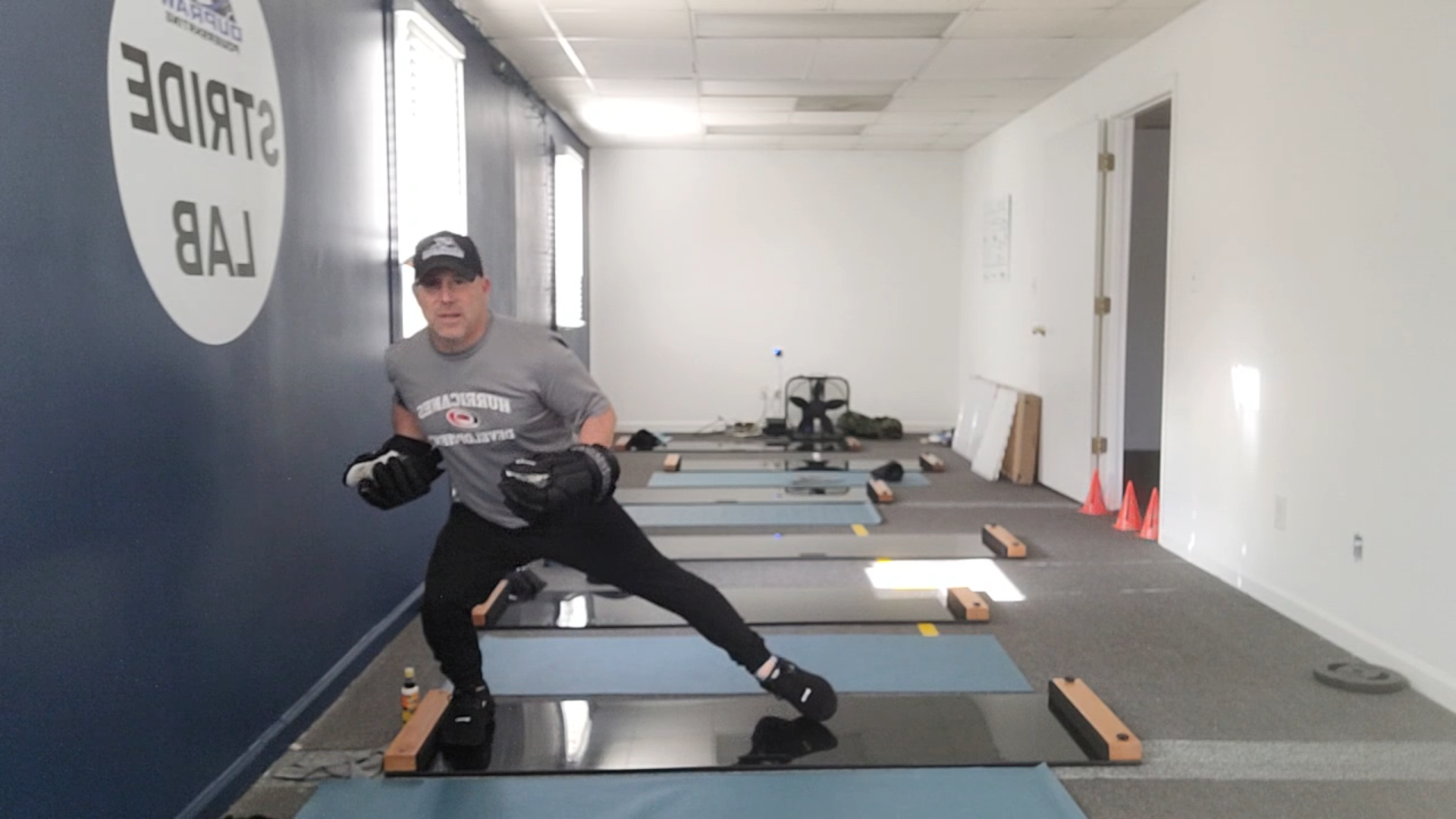Exploring the Three Planes of Movement: A Guide to Hockey Specific Fitness.
In the realm of hockey fitness and physical well-being, understanding the fundamental principles of movement is paramount. One such crucial concept is the division of movement into three planes, each of which plays a distinct role in how our bodies navigate space and perform various exercises. By delving into these planes—sagittal, frontal, and transverse—we can gain a deeper insight into hockey mechanics and design workout routines that enhance overall flexibility, strength, and agility.
Reverse Slideboard Lunges
1. The Sagittal Plane: Forward and Backward Movements
The sagittal plane divides the body into left and right halves, focusing on movements that occur in a forward or backward direction. This plane is fundamental to our daily activities such as walking, running, and bending forward to pick something up. Exercises like squats and lunges predominantly occur in the sagittal plane, engaging major muscle groups like quadriceps, hamstrings, and glutes.
Benefits of Sagittal Plane Movements:
Improved Lower Body Strength: Squats and lunges target the muscles in your thighs, hips, and buttocks, enhancing lower body strength.
Enhanced Posture: Engaging in sagittal plane exercises helps in improving posture by strengthening the core muscles, reducing the strain on the back.
2. The Frontal Plane: Side-to-Side Movements
The frontal plane divides the body into front and back halves, emphasizing lateral movements. Activities like side lunges, lateral raises, and jumping jacks are typical examples of exercises in the frontal plane. Incorporating exercises in this plane enhances stability and balance, working on the muscles along the sides of the body.
Benefits of Frontal Plane Movements:
Improved Balance and Stability: Frontal plane exercises challenge the body's balance, enhancing stability and reducing the risk of falls and injuries.
Targeted Core Engagement: Side-to-side movements engage the oblique muscles, leading to a stronger and more defined core.
Hockey Specific Stirde Mechanics: To reach maximum power and inside edge bite off each stride no matter the rpms of stride speed.
3. The Transverse Plane: Rotational Movements
The transverse plane divides the body into upper and lower halves and focuses on rotational movements. Actions such as twisting, rotating, and turning involve this plane. Exercises like Russian twists and wood chops are excellent examples of transverse plane movements, engaging the core muscles and promoting flexibility.
Benefits of Transverse Plane Movements:
Core Strength and Flexibility: Transverse plane exercises work on the deep core muscles, promoting stability and enhancing flexibility.
Injury Prevention: Improved rotational strength reduces the risk of injuries, especially in activities involving sudden twists and turns.
Embracing Holistic Movement
Understanding the significance of the three planes of movement is pivotal in the realm of hockey fitness. By incorporating exercises that span these planes, hockey players can achieve a comprehensive and balanced level of fitness, promoting strength, flexibility, and agility. So, whether you’re a hockey player, fitness enthusiast or a beginner on your wellness journey, consider the power of these planes in shaping a healthier, more functional you. By embracing holistic movement, you’re not just exercising; you’re nurturing your body’s innate capacity for versatile and graceful motion, ensuring a healthier and more fulfilling life.


